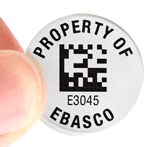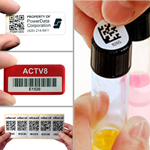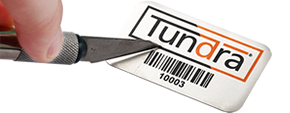High-tech bar codes thwart counterfeiters
In fiction, counterfeiters are discovered when the detective cleverly spots a fatal flaw in the picture on a fiver or a tenspot. In real life, it’s not that easy to tell. Recently, a team of Pacific Rim researchers reported on their work on a new bar code format that they hope will make counterfeiting a whole lot harder.

An ultra-high-tech barcoding system is set to help the U.S. government stop counterfeiting. From the U.S. Department of Treasury.
The report, published in The Journal of the American Chemical Society, details the work of an international team of researchers from Singapore, Australia and China on microscopic “lanthanide-doped upconversion materials.” Sometimes called rare earth elements, lanthanides are a group of minerals that are used in products such as ceramics, glass and some X-ray machines, lamps, lasers, magnets, cigarette lighters, projectors and steel alloys, and are used as catalysts in the production of still other products. (While not as rare as geologists once believed, they are difficult to mine and have been the cause of tensions in international trade, as well as environmental controversies). Highly reactive, they are well suited to a number of industrial processes.
Using lanthanides, the research team synthesized luminescent crystals and created a set of multi-colored bar codes with various colors of fluorescent dots on either end of a tiny microrod that contained lanthanide. The researchers used these microrods to produce transparent security ink. The multi-colored bar codes could then be read with a microscope equipped with a near infra-red laser, but could not be seen with the naked eye.
The research is significant, they said, because while other high-tech bar codes (including fluorescent and DNA-based bar codes) have been used in medical applications, their high cost has made them impractical for security applications. The new bar codes developed by the researchers would be more cost effective. These “novel materials offer opportunities as optical barcodes for anti-counterfeiting and multiplexed labeling applications,” according to an abstract of the report.
These new bar codes would be the latest innovation in ongoing efforts to harness technology to thwart counterfeiting. The U.S. government has been engaged in an ongoing effort to make counterfeiting more difficult, beginning with its 2003 redesign of the U.S. twenty-dollar bill. Such efforts have included color-shifting ink, watermarks, security strips, and microprinting.
Category: Barcodes and RFID













